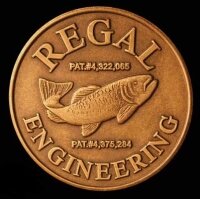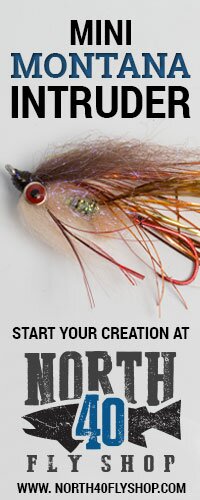
A lot of people don’t know this, but the original name for the Humpy is Goofus Bug, made popular by Pat Barnes. I’ve grabbed some excerpts out of Pat’s book “Ribbons of Blue” to help tell the story. First a brief story of how the pattern first came on the scene and then how Orvis started the “Humpy” name.
“The original fly came from California with Jack Horner. Jack was a talker. He claimed it caught fish everywhere. The fly he showed me was tied with one bunch of deer hair and one gray hackle. I was not impressed. He said he could tie one in a minute. I was still not impressed.
But later in the summer on Cliff Lake, with rising fish and a California customer, I cast one of Jack’s specials, tied to a 6X tippet. I struck a fish, lost the fly; tied on another from his box. One cast more in a different direction, another strike, another fish. This one came to net with my first fly in his mouth, leader dangling. I was impressed. I removed both flies, put the fish back, put the first fly in my hat with the leader dangling.
When I told this story to fishermen the next day they asked for a similar fly, goofy as it was. We kept busy tying this fly the rest of the summer under the name Goofus Bug.”
“In 1972, an Orvis representative asked if I knew of any new or unique dry fly patterns. I showed him the Goofus Bug. The 1973 Orvis catalog premiered a new fly called the “Humpy.”
It was Jack Dennis, Wyoming author, fly tier and tackler dealer, who really popularized the name Humpy. He blended the Goofus and Royal Wulff, using calf tail for wings, a red underbody, and moose hairs for the tail, to create what he called the “Royal Humpy.” In 1974, the fly came the focal point of the cover of the book, Western Trout Fly Tying Manual.”
So there you have it. Hopefully that helps clear some things up about the name of this great pattern. Incidentally the Goofus Bug pictured at the top is from Pat Barnes’ shop and is sitting in the special vise that Sig tied on at the shop.
Below Martin Westbeek shows us how to tie the pattern step-by-step.
Thread: 8/0, lt. Cahill*
Hook: Daiichi 1170, #12
Tail: Moose
Body: thread
Overbody and wing: Elk cow
Hackle: Silver Saddle, furnace and grizzle
Start the thread* halfway the hook shank. This is important, as it is the reference point for the body. Wrap to the bend, tie in tail, wrap to halfway point.
(*You can use 6/0, but I’ve found that 8/0, because of its smaller diameter, “bites” into the material better than 6/0.)
Take a bunch of Elk, remove all underfur, stack well, size (correct size is from tip of the tail to hook eye), and cut to length.
Tie the Elk to the hook, wrap towards the bend, keeping the Elk on top of the hook. Wrap until you’ve completely covered the thread wraps for the tail. Never mind the stubs at the tie-in point – they will disappear later on.
Wrap the underbody with thread. Pray that it doesn’t break, which happened to me… Lift the Elk, give it a quarter turn, fold it over and tie down on top of the hook shank. This should be at the halfway point. After three thread wraps I lift the wing and put two wraps under the wing around the shank, then three wraps over the wing again. I finish with one wrap around the shank only.
Divide the wing, put thread wraps around the base of each wing, post the wings. Lay a thread foundation in front of the wing, making a smooth taper towards the eye. Without this thread foundation the hackle will be all over the place due to the big difference in diameter behind and in front of the wing.
Tie in the hackle(s), dull side facing forward. Don’t tie the hackle down where the barbs start; leave a short length of bare stem, which will produce a cleaner start of the hackled collar. The ugly spot, where the thread broke, will be covered with the first wrap of the furnace hackle.
Palmer the hackles forward, starting with the hackle that was tied in last (here: the grizzle one). Tie off hackles and whip finish. Done!






















I always keep a few in my fly box. This is a killer for sure. Thanks for posting Paul.
Sure thing Howard!
Thanks!